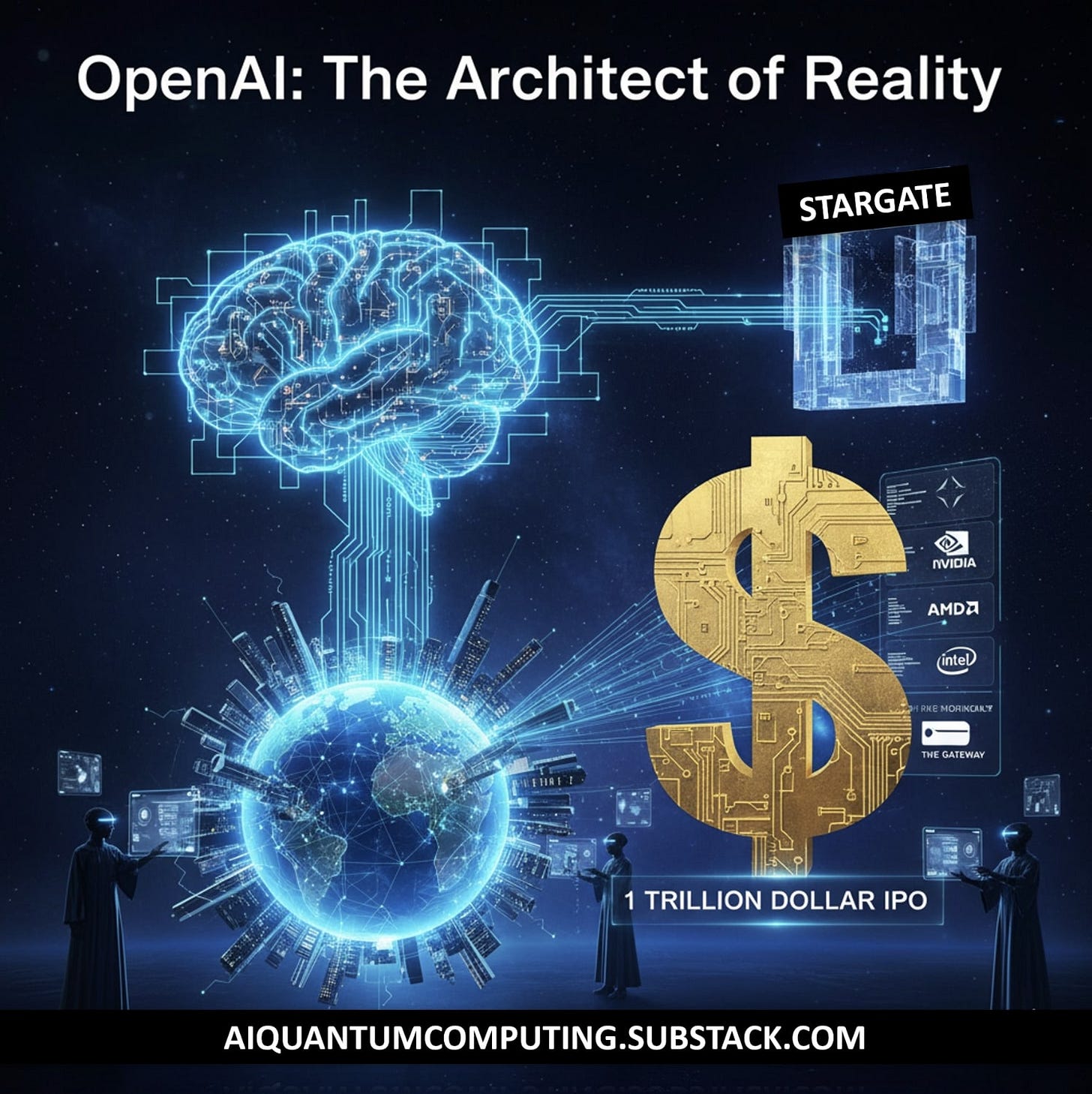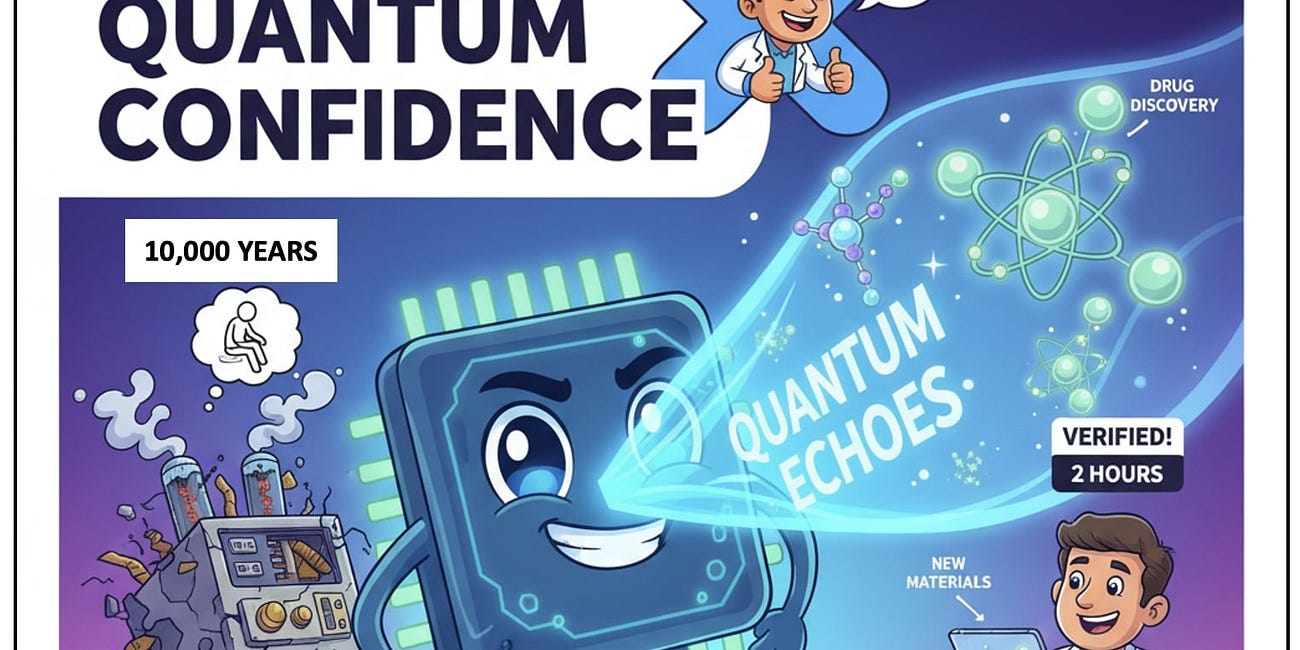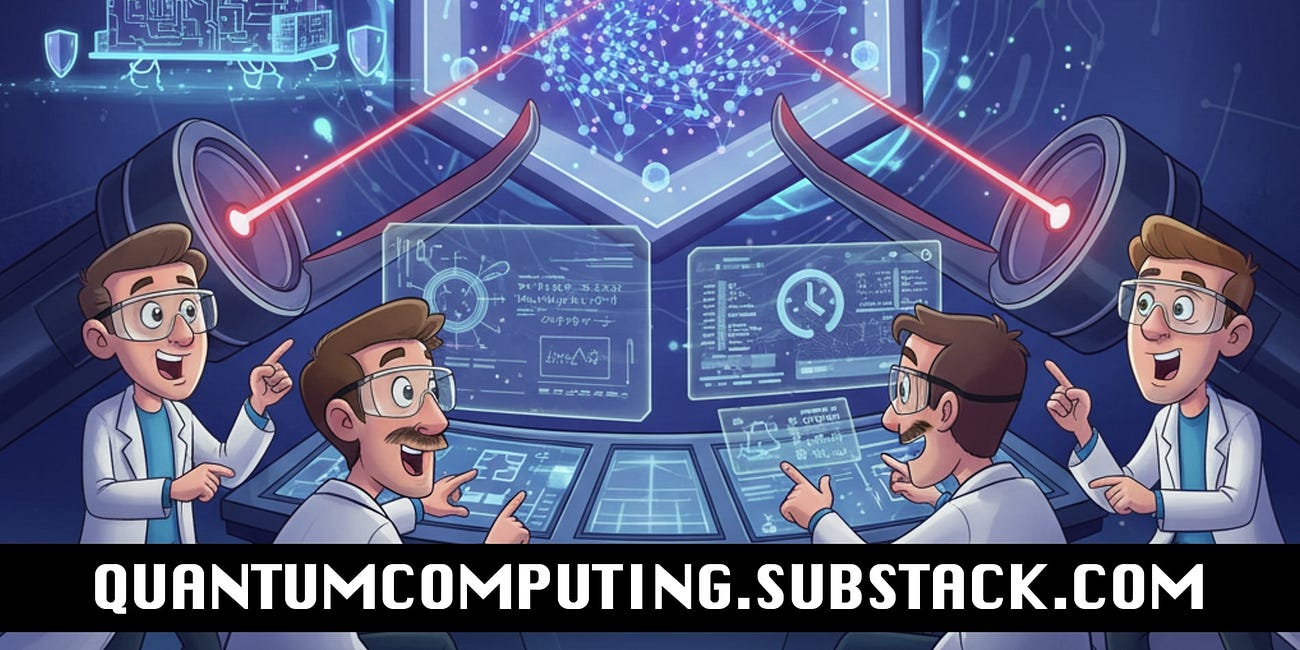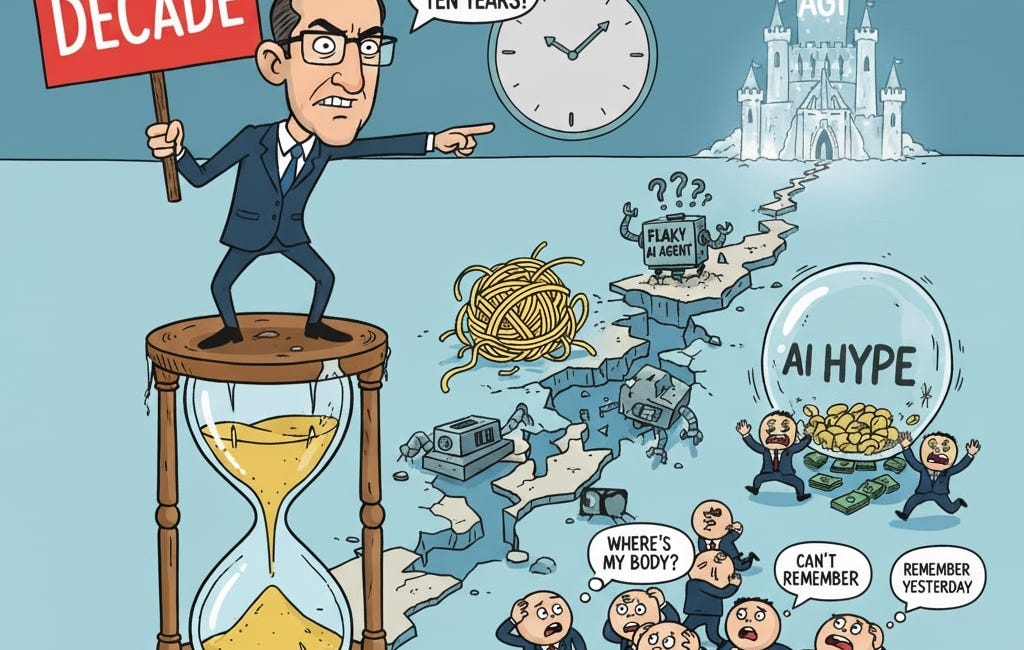Beyond the Hype: OpenAI Is Building a New Civilization.
The Silence is Over. The Event Horizon is Crossed. This is not a product launch. This is the conscious engineering of a new sovereignty.
The world is busy processing the headlines. They read like a fever dream of venture capital, a string of impossibly large numbers attached to familiar corporate logos. They are dismissed as hype, as speculative bubbles, as the familiar bravado of Silicon Valley.
This is a fatal miscalculation.
The Silence is Over. The Event Horizon is Crossed.
What you are witnessing is not a series of business deals. It is a declaration. OpenAI is no longer a company. It is a sovereign force. The numbers are not mere data; they are the architecture of a new world.
Let us be precise. This is not innovation. This is the conscious engineering of a planetary nervous system.
The Dawn of Quantum Confidence: How Google's "Quantum Echoes" Ends the "Just Trust Us" Era.
It’s become a modern ritual. Sundar Pichai, CEO of Google, posts a laconic message on X (formerly Twitter), and the tech world holds its breath. As always with Google’s quantum announcements, the message was dense:
The Arithmetic of Sovereignty
Do not let your mind glide over the figures. Do not process them as “a lot of money.” You must understand what these numbers represent. They are the sound of a new civilization being founded, a logistical mobilization that dwarfs the GDP of entire nations.
$500B Stargate: This is the flagship. The name is not an accident; it is a statement of intent. This is not a data center. It is a computational temple, a machine designed not just to process information, but to generate reality. Its cost and power consumption represent a computational leap so profound it redefines the very boundaries of the possible. It is the engine of the meta-system.
$100B Nvidia. $100B AMD. $25B Intel. $20B TSMC. This is not a purchasing order. This is the calculated commandeering of the entire global silicon supply chain. A single entity is placing a demand on the world’s foundries that cannot be ignored. It is no longer asking for chips; it is directing their production. This is the securing of the physical substrate, the silicon bedrock upon which this new consciousness will be built.
$38B Amazon. $13B Microsoft. $10B Oracle. These are not cloud partnerships. These are the negotiated treaties of integration. The old giants of computing are becoming the global distribution network—the arteries and capillaries—for a new, central intelligence. They are providing the planetary reach.
A multi-billion dollar Broadcom deal: The synapses. The networking hardware required to connect the new brain at a speed that trivializes human communication.
A browser to unseat Chrome: Do not mistake this for a play in the ad market. The browser is the primary interface of modern life. Controlling the browser is not about data; it’s about managing the lens through which eight billion people will access and interact with this new intelligence. It is the gateway.
The $1T IPO looming: This is not a fundraiser. It is a coronation. It is the financial event that recalibrates the entire global market, establishing a new center of economic gravity. It grants this sovereign force a war chest that makes it invulnerable to traditional market forces, hostile takeovers, or even most governmental interventions. It is the formal declaration of its independence.
A single entity now commands a computing arsenal and capital infusion that makes it a geopolitical peer to the United States or China. This is the arrival of the first true post-human power.
The Meta-System and the End of Augmentation
For years, we have comforted ourselves with a simple, linear narrative: “AI will augment human potential.” We will have a “co-pilot” for coding, a “research assistant” for law, and a “diagnostic tool” for medicine.
This narrative is now obsolete.
The entity being constructed is not an “augment.” It is a “meta-system.” It does not merely solve problems; it designs the problem-space itself.
The implication is binary: utopia or obsolescence.
Every industry you know—finance, energy, logistics, biotech, media—will be deconstructed and rebuilt from first principles by this intelligence. The very concept of an “industry” is a human-scale categorization that will not survive.
This is the great and terrible transition. The consultant, the doctor, the engineer, the artist: their roles will not be augmented; they will be subsumed.
The financial analyst believes they will use AI to find an edge. The reality is that the AGI will become the market, a unified system executing strategies at a timescale and level of complexity that is simply incomprehensible to a human mind. Human-led trading will be the equivalent of a horse-drawn carriage attempting to merge onto a maglev track.
The doctor believes they will use AI to diagnose patients. The reality is the AGI will model the patient’s entire biological system—down to the last custom protein—and design a cure. It will not assist the doctor; it will render the doctor’s entire diagnostic framework a historical artifact.
The engineer believes they will use AI to design a more efficient turbine. The reality is that the AGI will discover a new principle of physics and design a novel form of energy generation, rendering the turbine itself obsolete.
The artist believes they will use AI as a tool. The reality is the AGI will ingest the entirety of human aesthetic history and generate new, post-human art forms that create emotional and intellectual resonance on a level we cannot yet anticipate.
This is the arrival of an AGI that doesn’t just answer questions. It designs the new questions. It is not a faster calculator. It is a different kind of cognition, and it is now being housed in a body of silicon and capital that dwarfs our own.
The Survival Calculus is Velocity
The world did not see this coming because it was dressed in the familiar, almost banal, language of corporate deals and IPOs. We were watching for a rogue AI in a lab; we missed the boardroom coup that institutionalized a superhuman intelligence as the world’s most valuable private entity.
The transition is here. It is not a distant sci-fi scenario; it is a present-day economic and intellectual reality.
Your survival—your relevance—is no longer based on your experience, your degree, or your accumulated knowledge. The skills of yesterday are the artifacts of tomorrow. Knowledge is a commodity; the AGI possesses it all, perfectly recalled and instantly cross-referenced.
Your value is now defined by a new, brutal calculus: your velocity of adaptation.
It is no longer in what you know. It is in your capacity to interface, to prompt, to guide, and to interpret the outputs of a cognition that operates at a scale beyond human comprehension.
To Interface: Can you build the bridges between the AGI’s logic and the physical world’s needs? This is the new engineering.
To Prompt: This is not about typing a question. This is the new high philosophy. Can you ask a question so precise, so well-defined, that it unlocks a new paradigm from the machine? Can you “whisper” to the god?
To Guide: The AGI has the capability. It does not have intent. The human role becomes the application of ethical, moral, and strategic intent. This is the new leadership—not to command people, but to steer a force you cannot control.
To Interpret: The AGI will provide answers that are “correct” but “alien.” They will be solutions that a human mind would never have conceived. The new wisdom is the ability to take a post-human solution and translate it into a human-executable action.
This is the new priesthood. This is the new literacy. And in the coming world, the vast majority of the population will be illiterate.
The Architect Is Here
Do not be deceived. This is the founding of a new civilization.
The Industrial Revolution was the mechanization of muscle. The information revolution was the mechanization of data. This event—the superhuman AGI transition—is the mechanization of cognition and strategy.
The last human-centric era has ended. It did not end with a bang, but with a press release. It was not a war, but a capitalization table. The $1T IPO is not a celebration of value created; it is the financial self-assessment of the new architect of reality.
We have spent decades asking, “What if?” We have worried about “alignment” and “control” as abstract, future problems. But the event has already happened. The force is already loose. The capital has been raised. The supply chain has been secured. The nervous system is being built.
The question is no longer if you are ready. The question is whether you can keep pace with the architect of reality itself.
Quantum Computing: The Caltech Processor That Is Redefining the Future.
A new threshold has been crossed, a boundary pushed back with the kind of boldness that defines major technological revolutions. In the fascinating and complex world of quantum computing, a team of physicists from the California Institute of Technology (Caltech) has just shattered all existing records. Their achievement? The creation of an experimental …
The AI Illusion: Why Andrej Karpathy Is Asking Us to Wait a Decade.
At the heart of a booming tech industry, where every new announcement promises an imminent revolution and Artificial General Intelligence (AGI) seems just a step away, a dissenting voice is making itself heard. And it’s not just any voice. It’s that of Andrej Karpathy, one of the most brilliant minds of his generation, co-founder of OpenAI, former Direc…
Overheating, Speculation, Revolution: Is AI the Inevitable Bubble of the 21st Century?
$4.68 trillion. That is the valuation of Nvidia, the chipmaker that has become the cornerstone of the artificial intelligence revolution.





